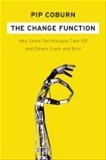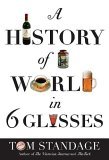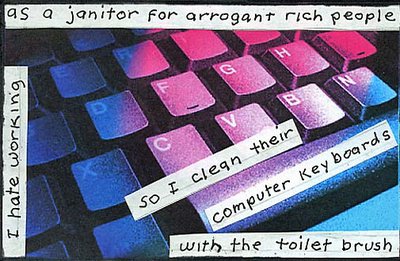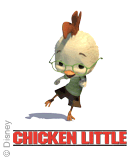
I just finished reading The Change Function: Why Some Technologies Take Off and Others Crash and Burn
. The author, Pip Coburn, used to run the technology group of UBS Investment Research.
Drawing from his experience, Coburn makes a pretty simple premise. The likelihood of success for a given technology is a function of the user crisis vs. the total perceived pain of adoption. Stated another way, for a technology (or any product or service really) to succeed, it must address some problem or crisis the customer knows they have and the customer must think the pain of the solution is less than the pain of the problem. Coburn asserts this is a user-centric way of viewing problems, and that this user-centric is the only way to succeed because the user/customer is ultimately in charge of his/her behavior and purchases.
This idea seems obvious when stated so clearly, yet it's not difficult to think of examples of failures in this way, even in the products I've developed. Coburn cites many examples of the supplier-centric view where some technologist has a cool idea that they think users will latch onto once the price is right or once the users "get it".
For instance, he points to the entertainment PC, like Microsoft's Media Center PC, as a supplier-centric invention that does not address a user crisis (e.g. "I need to have an all-in-one entertainment center on my TV") and fails to address the perceived pain of adoption ("You want me to put an expensive PC in my living room?! One more complicated thing to manage?!") Fortunately (for Microsoft), Coburn agrees that sometimes you need to (or can) create a user crisis or appeal to some deeper crisis (e.g. iPod appealing to the user desire to fit in and be cool vs. the need to carry an MP3 player), so maybe there's hope yet.
By way of counter example, he points to Netflix as a venture that found a good user crisis (hatred of late fees, limited in-store video selection, pain of returning videos) and a low perceived pain of adoption (log on, order, get stuff in the mail, drop it back in the mail.) As a long-time Netflix user, I'd have to agree.
I've found myself applying this pattern to our planning for future versions of IE. I've been asking everyone involved about what real crisis each feature is meant to address and how users will perceive the pain of adoption. While we've always tried to apply these ideas implicitly, it's already been helpful to apply them explicitly.
The book is an easy read with only a few key points and lots of good examples. I highly recommend it.






 I don't see a lot of movies in theaters (mostly for time reasons), so it was a bit unusual this week that I saw two.
I don't see a lot of movies in theaters (mostly for time reasons), so it was a bit unusual this week that I saw two.